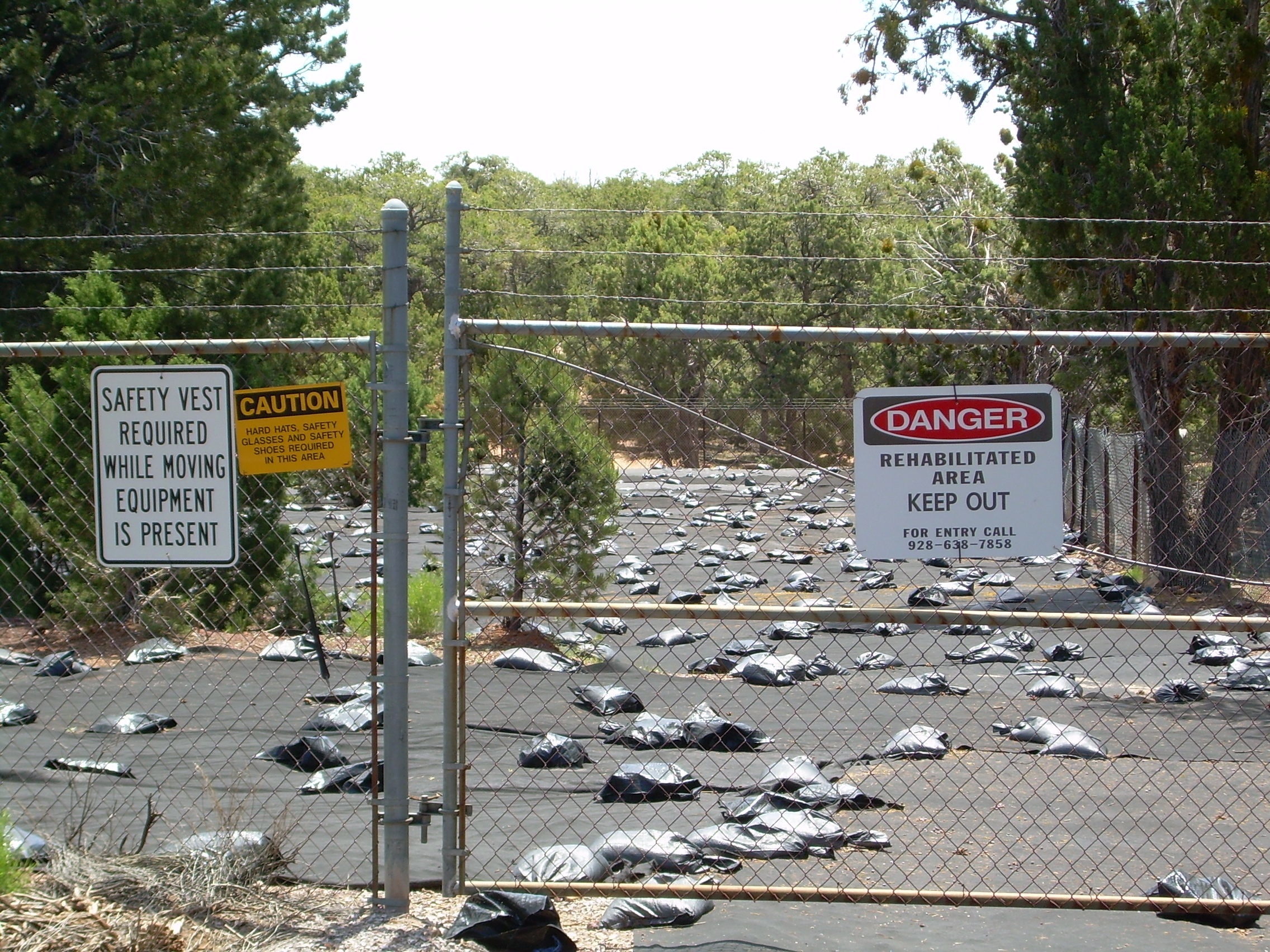The caddisfly Limnephilus. Caddisfly larvae often inhabit springs in the Grand Canyon region. May 2019. Photo credit: Marie Noele Croteau , USGS .
USGS scientist (Kim Beisner) collecting water chemistry data at Horn Creek. April 2016. Photo credit: Marie Noele Croteau , USGS .
USGS scientists (Marie Noele Croteau and Dan Cain) collecting aquatic invertebrates (mainly damselfly larvae) in Horn Creek near the bedrock wall. April 2019. Photo credit: Kim Beisner , USGS .
Experimental vials placed into Indian Garden Creek during an experiment conducted to characterizing the physiological elimination of U and co-occurring metals in native caddisfly larvae. April 2019. Photo credit: Marie Noele Croteau , USGS .

Former Orphan Mine site on the rim of the Grand Canyon. Black material is used to cover the former Orphan Mine site to reduce dust dispersion by wind. July 2010. Photo credit: Wendy Kuhne , Savannah River National Laboratory .

Fencing around former Orphan Mine site. Black material is used to cover the former Orphan Mine site to reduce dust dispersion by wind. July 2010. Photo credit: Wendy Kuhne , Savannah River National Laboratory .

Black material covers former Orphan Mine site to reduce dust dispersion by wind. July 2010. Photo credit: Wendy Kuhne , Savannah River National Laboratory .
Native plants being grown by GCNP to be used for the restoration of the Orphan Mine site. June 2012. Photo credit: Jo Ellen Hinck , USGS .
"Glory Hole" of former Orphan Mine site on the south rim of the Grand Canyon. June 2012. Photo credit: Jo Ellen Hinck , USGS .
Former Orphan Mine site on the rim of the Grand Canyon. June 2012. Photo credit: Jo Ellen Hinck , USGS .
The GCNP began native plant restoration of the road that lead to Orphan Mine. June 2012. Photo credit: Jo Ellen Hinck , USGS .